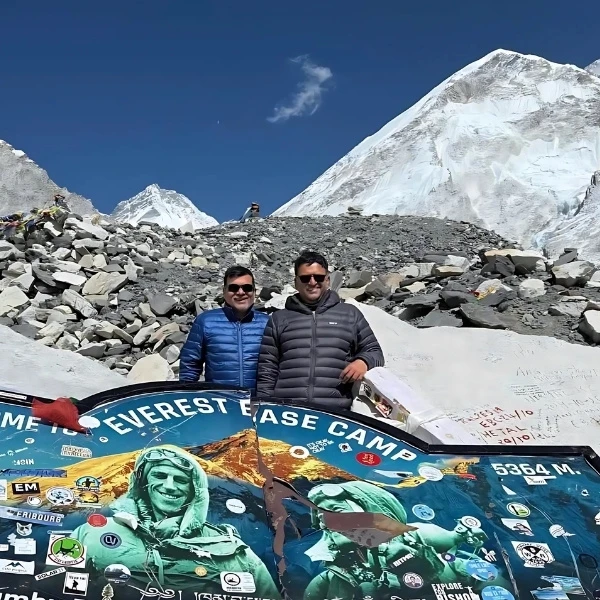Altitude sickness is a common challenge for trekkers on the Everest Base Camp (EBC) trek, where oxygen levels decrease significantly as elevation increases. Understanding its causes, symptoms, and prevention methods is crucial for a safe and enjoyable trekking experience.
Altitude Sickness on the Everest Base Camp Trek: Causes, Symptoms, and Prevention
Table of Contents
At What Point Do Trekkers Start Getting Altitude Sickness?
Trekkers typically begin experiencing altitude sickness above 2,500 meters (8,200 feet), but symptoms become more noticeable at higher elevations. The most common points where trekkers report altitude sickness include:
- Dingboche (4,410m / 14,470ft) – Some trekkers experience mild symptoms here.
- Lobuche (4,940m / 16,210ft) – AMS cases increase significantly at this altitude.
- Gorak Shep (5,164m / 16,942ft) – The final stop before reaching Everest Base Camp, where altitude sickness is most prevalent.
What is Altitude Sickness?
Altitude sickness, also known as Acute Mountain Sickness (AMS), occurs when the body struggles to adapt to lower oxygen levels at high elevations. If left untreated, it can escalate into more severe conditions like High Altitude Pulmonary Edema (HAPE) or High Altitude Cerebral Edema (HACE), which can be life-threatening.
Symptoms of Altitude Sickness
Common symptoms of AMS include:
- Headache
- Nausea and vomiting
- Dizziness
- Fatigue and weakness
- Shortness of breath
- Loss of appetite
- Difficulty sleeping
If symptoms worsen, trekkers may develop HAPE (fluid buildup in the lungs) or HACE (swelling in the brain), which require immediate descent and medical attention.
Types of Altitude Sickness
- Acute Mountain Sickness (AMS) – The most common form, presenting mild to moderate symptoms.
- High Altitude Pulmonary Edema (HAPE) – A buildup of fluid in the lungs, leading to breathing difficulties.
- High Altitude Cerebral Edema (HACE) – A severe condition where fluid builds in the brain, causing confusion and loss of coordination.
How to Prevent Altitude Sickness
To minimize the risk of AMS, trekkers should follow these precautions:
- Acclimatization – Take rest days at key points like Namche Bazaar and Dingboche to allow the body to adjust.
- Hydration – Drink plenty of water to stay hydrated.
- Slow Ascent – Avoid rapid altitude gain; follow the climb high, sleep low principle.
- Avoid Alcohol & Smoking – These can worsen symptoms.
- Proper Nutrition – Eat high-energy foods to maintain strength.
Natural Ways to Avoid Altitude Sickness
Aside from medication, trekkers can take natural approaches to minimize AMS risk:
- Garlic or Ginger Consumption – Traditionally believed to help oxygen absorption.
- Deep Breathing Techniques – Helps improve oxygen intake.
- Adequate Rest & Sleep – Avoid overexertion at high altitudes.
- Adaptation Days – Spending additional time at higher elevations improves adjustment.
What Medication Should Trekkers Take After Getting Altitude Sickness?
- Diamox (Acetazolamide) – Helps prevent AMS but does not cure it once symptoms appear.
- Dexamethasone – Used for severe AMS cases and HACE.
- Nifedipine – Often prescribed for HAPE.
- Immediate Descent – The most effective treatment if symptoms worsen.
Final Thoughts
Altitude sickness can affect anyone, regardless of fitness level. Proper acclimatization, hydration, and gradual ascent are key to a safe and enjoyable EBC trek.





.webp)

